#gas accretion
Explore tagged Tumblr posts
Text
Mission to Uranus
As many people know, Uranus is a planet that is tilted onto its side and that makes it very unusual. Why, and how did that happen? There is an incentive to send a mission o find out what we can, but that is extremely expensive, so if you do you want to find out as much as you can about the system. That includes looking at the moons, because their orbits follow the tilt. That tilt means the system…
View On WordPress
#accretion disk lifetime#atmosphere formation#ESA#gas accretion#monarchic growth#NASA#oligarchic collisions#Planetary formation#Uranus’ moons#Uranus’ tilt
0 notes
Video
Protostar in LDN 1527 by Judy Schmidt Via Flickr: Update: Simeon Schmauß over on Twitter (@stim3on) recommended G'MIC for taking care of the horizontal noise / banding. It worked pretty great. There's a Photoshop plugin for it, too. Wanted to process my own version of this one, since nebular landscapes are some of my favorite views. Having a hard time with the linear noise pattern, especially near the top of the image. In the center of this view is a newly forming star crossed by a dark disk of dust (say that three times fast!) which is casting shadows to the left and right, and allowing cones of light out the top and bottom. Think of it like a light bulb inside of a donut with a bunch of fog. Though the infrared light can penetrate much of the dust, there are clues in the image that show some of the dust is still too thick to see through. At the lower right especially are a lot of background galaxies. On the left, the background galaxies are fewer, and what we see are dimmer, so we can tell there is more dust there. You can see the official release here. They've got a much better description than I could ever write. Orange "screen": NIRCam/F444W-F470N (not arithmetic) Red: NIRCam/F444W Green: NIRCam/F335M Blue: NIRCam/F200W, F187N, F115W North is 100° counter-clockwise from up.
#protostar#protostellar#disk#accretion#nebula#dust#gas#cones#light#shadow#emission#infrared#jwst#hourglass#protoplanetary#flickr
14 notes
·
View notes
Text
HOW ARE BLACK HOLES CREATED, AND HOW DO THEY GROW??
Blog#461
Wednesday, December 11th, 2024
Welcome back,
In 2017, astronomers started finding monster black holes in the very early universe. Containing roughly a billion times the mass of our Sun, these black holes were surrounded by disks of infalling matter shining so intensely that we can detect them across immense stretches of space and time.
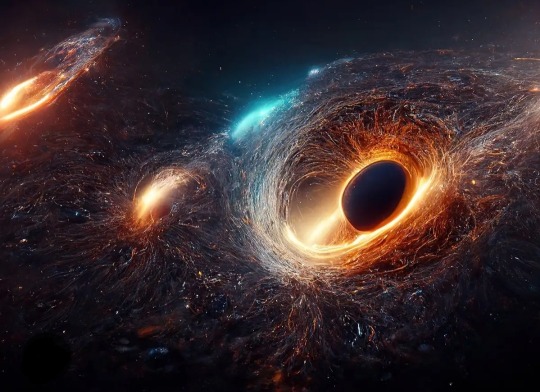
These gravitational giants existed when the universe was only 700 million years old, or 5 percent its current age. At that point in cosmic history, the universe was still a toddler. Gravity was just beginning to rein in clouds of gas and dark matter to form structures that would later evolve into mature spiral and elliptical galaxies. Stars were beginning to pop into being, but they do today.
According to the traditional picture of black hole formation and growth, the universe at this time simply had not existed long enough for black holes to bulk up to a billion solar masses.
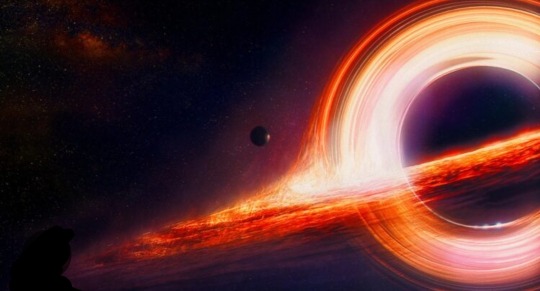
So, based on our general understanding of how black holes form and grow, these black holes should not exist.
And yet they do — posing a major challenge that astrophysicists have yet to unravel.
Quasars are brightly shining beacons of light and energy generated by the accretion of material onto supermassive black holes. In the 1990s, astronomers using a combination of ground- and space-based telescopes started to find extremely distant quasars powered by black holes of a billion or more solar masses.
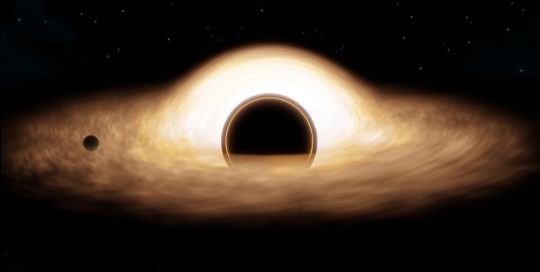
By the mid-2010s, it was no longer a big deal to find quasars dating back to 1 billion or 2 billion years after the Big Bang. But theorists had a difficult time explaining how such massive black holes could have arisen so soon in the universe’s history.
For quasars and other objects that existed many billions of years ago, it’s meaningless to express their distances in terms of light-years. The universe has expanded so much between then and now that astronomers instead refer to an object’s redshift, which is a measurement of how much cosmic expansion has stretched the object’s light toward redder (longer) wavelengths.
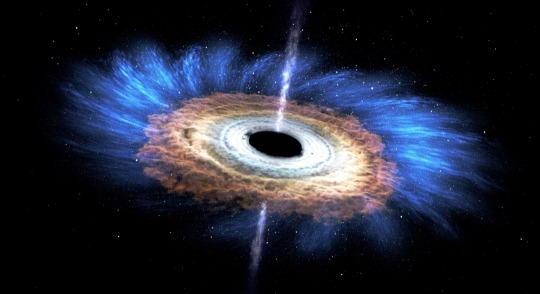
For years, astronomers such as the University of Arizona’s Xiaohui Fan have been identifying quasars at redshifts as high as 6, when the universe was about 900 million years old. They’ve even found a few around redshift 7, which corresponds to an era when the universe was about 735 million years old. But in late 2017, an international team led by Eduardo Bañados of the Carnegie Institution for Science announced a quasar at a record-shattering redshift of 7.54. This quasar, designated J1342+0928 (J1342 for short), based on its sky coordinates in Boötes, was radiating 40 trillion Suns’ worth of energy at a time when the universe was only 690 million years old.
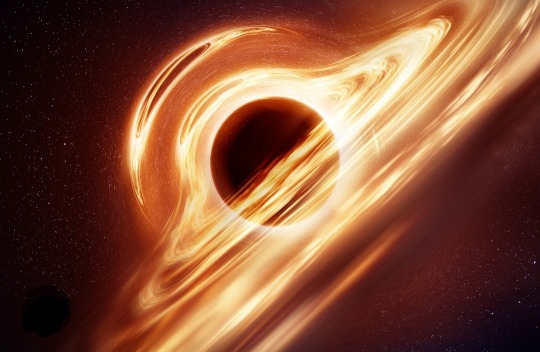
The team found J1342 by mining data from NASA’s Wide-field Infrared Survey Explorer satellite, the United Kingdom Infrared Telescope Deep Sky Survey Large Area Survey, and the DECam Legacy Survey. They used the 6.5-meter Magellan Telescope in Chile to measure the quasar’s redshift, while observations with the 8-meter Gemini North Telescope in Hawaii enabled the team to estimate the black hole’s mass: around 800 million Suns.
Originally published on https://www.astronomy.com
COMING UP!!
(Saturday, December 14th, 2024)
"HOW BIG CAN 'SUPER MASSIVE BLACK HOLES' GET??"
#astronomy#outer space#alternate universe#astrophysics#universe#spacecraft#white universe#space#parallel universe#astrophotography
82 notes
·
View notes
Text
New evidence has emerged suggesting that the building blocks of life were delivered to the primordial Earth from space by meteorites, a finding that could help scientists hunt for alien life. These meteorites would have been the fractured remains of early "unmelted asteroids," a type of planetesimal. Planetesimals are small rocky bodies that served as the main building blocks of the solar system's rocky planets, including Earth. They were formed around 4.6 billion years ago in the disk of dust and gas around the infant sun as particles around our young star began to stick together, accreting more mass and making progressively larger bodies.
Continue Reading.
83 notes
·
View notes
Text
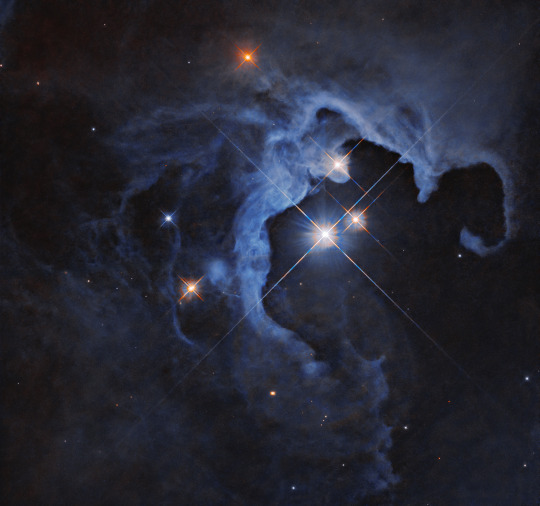
Hubble Views the Dawn of a Sun-like Star | Hubble Space Telescope
Looking like a glittering cosmic geode, a trio of dazzling stars blaze from the hollowed-out cavity of a reflection nebula in this new image from NASA’s Hubble Space Telescope. The triple-star system is made up of the variable star HP Tau, HP Tau G2, and HP Tau G3. HP Tau is known as a T Tauri star, a type of young variable star that hasn’t begun nuclear fusion yet but is beginning to evolve into a hydrogen-fueled star similar to our Sun. T Tauri stars tend to be younger than 10 million years old ― in comparison, our Sun is around 4.6 billion years old ― and are often found still swaddled in the clouds of dust and gas from which they formed. As with all variable stars, HP Tau’s brightness changes over time. T Tauri stars are known to have both periodic and random fluctuations in brightness. The random variations may be due to the chaotic nature of a developing young star, such as instabilities in the accretion disk of dust and gas around the star, material from that disk falling onto the star and being consumed, and flares on the star’s surface. The periodic changes may be due to giant sunspots rotating in and out of view. Curving around the stars, a cloud of gas and dust shines with their reflected light. Reflection nebulae do not emit visible light of their own, but shine as the light from nearby stars bounces off the gas and dust, like fog illuminated by the glow of a car’s headlights. HP Tau is located approximately 550 light-years away in the constellation Taurus. Hubble studied HP Tau as part of an investigation into protoplanetary disks, the disks of material around stars that coalesce into planets over millions of years.
Credits : NASA, ESA, G. Duchene (Université de Grenoble I); Image Processing: Gladys Kober (NASA/Catholic University of America)
#astronomy#NASA#space#hubble space telescope#stars#ESA#Taurus#star#nebula#HP Tau#cosmic dust#light#fav#ref#interstellar#triple-star system#galaxy
199 notes
·
View notes
Photo

2024 April 1
Swirling Magnetic Field around Our Galaxy's Central Black Hole Image Credit: EHT Collaboration
Explanation: What's happening to the big black hole in the center of our galaxy? It is sucking in matter from a swirling disk -- a disk that is magnetized, it has now been confirmed. Specifically, the black hole's accretion disk has recently been seen to emit polarized light, radiation frequently associated with a magnetized source. Pictured here is a close-up of Sgr A*, our Galaxy's central black hole, taken by radio telescopes around the world participating in the Event Horizon Telescope (EHT) Collaboration. Superposed are illustrative curved lines indicating polarized light likely emitted from swirling magnetized gas that will soon fall into the 4+ million mass central black hole. The central part of this image is likely dark because little light-emitting gas is visible between us and the dark event horizon of the black hole. Continued EHT monitoring of this and M87's central black hole may yield new clues about the gravity of black holes and how infalling matter creates disks and jets.
∞ Source: apod.nasa.gov/apod/ap240401.html
193 notes
·
View notes
Text
Some Science Vocabulary

for your next poem/story
Word — Science Meaning; Public Meaning
Bank - land alongside a river/lake; a place where people store money
Bar - unit of measure of atmospheric pressure; place to drink alcoholic beverages
Belt - collection of asteroids in a disc shape; materials worn around waist to support clothes
Bonding - electrostatic attraction between atoms; making an emotional connection
Charge - force experienced by matter when in an electromagnetic field; demand a price for rendered goods/services
Code - software/computer language; encrypted message
Crust - outermost layer of planet; edge of pizza/pie
Current - water or air moving in a direction; belonging to the present time
Cycling - flow of nutrients or elements; riding a bicycle
Dating - determining age of site/artifact; initial stage of romantic relationship
Driver - influential factor; someone who drives a vehicle
Dwarf - celestial body resembling small planet; characters from Snow White
Fault - fracture in a rock with movement; responsible for accident/misfortune
Fetch - distance traveled by wind/waves over water; go far and then bring back something/someone
Force - strength/energy of action/movement; make someone do something against their will
Grade - gradient/slope; level of proficiency
Hertz - the SI unit of frequency; rental car company
Jet - gas stream ejected from an accretion disk surrounding star; an aircraft powered by jet engines
Mantle - planet layer between crust and core; important role passed from person to person
Matter - physical substance in general; be of importance, have significance
Model - computer simulation; promotes fashion/product
Mole - SI unit used to measure amount of something; small rodent-like mammal
Plastic - substance that is easily shaped/molded; synthetic material
Pressure - force per unit area that gas/liquid/solid exerts on another; use of persuasion to make someone do something
Productive - creating organic matter through photo/chemosynthesis; busy and efficient
Sample - to take a sample for analysis; a small part of something
Scale - system of marks used for measuring; device used for measuring weight
Shear - difference in wind speed/direction; cut wool off of
Shelf - a submarine bank; a surface for displaying/storing objects
Stress - pressure/tension exerted on a material object; mental/emotional strain
Submarine - existing/occurring under the sea surface; a ship that stays submerged under water for extended periods
Surf - line of foam on seashore from breaking waves; riding a surfboard
Swell - sea movement in rolling waves that do not break; to become larger in size (e.g. a body part)
Source ⚜ More: Word Lists
#word list#science#writeblr#spilled ink#dark academia#writing reference#writers on tumblr#literature#writing prompt#poetry#poets on tumblr#langblr#linguistics#light academia#creative writing#writing inspo#writing ideas#writing inspiration#terminology#writing resources
87 notes
·
View notes
Text

Black Holes Signature From Advective Disks - January 15th, 1997.
"What does a black hole look like? If alone, a black hole would indeed appear quite black, but many black hole candidates are part of binary star systems. So how does a black hole binary system look different from a neutron star binary system? The above drawings indicate it is difficult to tell! Theoretical work, however, has provided a way to tell them apart: advective accretion flows (ADAFs). A black hole system so equipped would appear much darker than a similar neutron star system. The difference is caused by the hot gas from the ADAF disk falling through the event horizon of the black hole and disappearing - gas that would have emitted much light were the central object only a neutron star. Observations of the soft X-ray transient V404 Cyg yielded a spectrum much like an ADAF onto a black hole - and perhaps brighter than allowable from an ADAF onto a neutron star."
#nasa#space#cosmos#universe#astronomy#astrophysics#astrophotography#black holes#binary star system#neutron star
39 notes
·
View notes
Text
Welcome to NGC 1672 !

This spiral galaxy resides about 49 million light-years away in the constellation Dorado.
Shining stars fill the galactic disk, and its spiral arms are home to bubbles of hydrogen gas (seen in red) fueled by radiation from newborn stars shrouded within.
At its center is an active galactic nucleus, which forms as a result of heated matter swirling in the accretion disk surrounding NGC 1672's supermassive black hole.
Read more about this #HubbleFriday image at the link in our bio!
Image description: A spiral galaxy with an oval-shaped disk. Two large arms curve out away from the ends of the disk. Bright pink patches and dark reddish threads of dust fill the arms. The bright pink patches indicate where stars are forming. The core is very bright and filled with stars. Some large stars appear in front of the galaxy. Directly under the point where the right arm joins the disk, a fading supernova is visible as a green dot.
Image credit: ESA/Hubble & NASA, O. Fox, L. Jenkins, S. Van Dyk, A. Filippenko, J. Lee and the PHANGS-HST Team, D. de Martin (ESA/Hubble), M. Zamani (ESA/Hubble)
#space#nasa#universe#art#astronomy#science#galaxy#moon#stars#cosmos#spacex#scifi#astrophotography#photography#earth#astronaut#love#alien#nature#mars#spaceart#sky#spaceexploration#planets#aliens#spaceship#spacetravel#rocket#digitalart#design
35 notes
·
View notes
Text
Quasars: The Beacons of the Early Universe

Quasars are the most luminous and distant objects in the universe, fueled by supermassive black holes at the hearts of galaxies. As matter spirals onto the black hole, it is heated to extreme temperatures and releases enormous quantities of light and energy, which makes quasars some of the most luminous objects in the universe.
They are significant for astronomy due to their extreme energy output and distance, providing a glimpse into the earliest epochs of the universe.
---------------------------------✩₊˚.⋆☾⋆⁺₊✧---------------------------------
THE POWER BEHIND QUASARS:
Quasars are powered by supermassive black holes at the centers of remote galaxies. The immense gravitational pull of the black hole draws in gas, dust, and other matter, which forms a swirling structure called an Accretion Disk around it.
Matter in the accretion disk moves rapidly and becomes compressed, reaching temperatures of millions of degrees. This extreme heat makes the matter release huge amounts of energy — across the electromagnetic spectrum, including visible light, X-rays and radio waves. This release of energy is what makes quasars so unbelievably bright, they can outshine their entire host galaxies.
While the black hole itself emits no light, the phenomenon of material accretion and subsequent heating is the basis of the quasars' extreme luminosity.
---------------------------------✩₊˚.⋆☾⋆⁺₊✧---------------------------------
PROBING THE EARLY UNIVERSE:
Quasars, located billions of light-years away, offer a unique glimpse into the early universe. Since they were more common in the universe’s early stages, studying them helps scientists understand how galaxies and supermassive black holes formed and evolved. By observing quasars, astronomers can learn about the conditions of the young universe, how galaxies gathered matter, and the influence of black holes on galaxy growth. This knowledge helps piece together the history of the universe’s evolution from its chaotic beginnings to the structured galaxies we observe today.
---------------------------------✩₊˚.⋆☾⋆⁺₊✧---------------------------------
HIGH SPEED JET AND REDSHIFTS:
Some quasars emit powerful jets of energy and particles from their supermassive black holes. High redshift occurs when the light from these distant objects shifts toward longer wavelengths due to the expansion of the universe. The greater the redshift, the faster the object is moving away from us, and the farther it is located. By measuring the amount of redshift in quasar light, scientists can calculate its distance and track the rate at which the universe is expanding, providing valuable insights into cosmic evolution.
---------------------------------✩₊˚.⋆☾⋆⁺₊✧---------------------------------
FUN FACTS:
Quasars were first discovered in the 1960s when astronomers noticed bright, star-like objects that emitted unusual radio waves.
The term "quasar" comes from "quasi-stellar object" because they looked like stars when first observed.
Some quasars are not constant in brightness. They can flare up or dim over time.
If a quasar’s jet is pointed directly at Earth, it is known as a "blazar," and it appears even brighter due to the alignment.
Before we understood what they were, quasars were once mistaken for distant galaxies or stars emitting strange radio waves.
29 notes
·
View notes
Note
🔥The ice giants
Oh, this one's tricky. Do people have strong enough feelings about the ice giants for opinions about them to be unpopular? Even NASA doesn't care enough about them to send a spacecraft more than once in a blue moon. I think I'll try to weasel out of this one with the opinion 'all planets are interesting, even Neptune,' on the grounds that uninterestingness is itself the dominant opinion.
The midcentury explorations of the solar system were, in retrospect, kind of crushing for the human imagination. We went from totally unbounded speculations about the diversity of worlds- imagining robust ecosystems on Venus and Mars as late as the 50s and early 60s- to a series of photographs showing cratered, dead, atmosphere-less worlds. And 'realism' became accepting these photographs, building a story of the cosmos that is not just sterile but quite simple, treating the solar system as conforming closely to low-complexity models of planetary formation. Gravity collects micrometeorites and gas particles in planetoids and moons according to the ratios predicted by temperature and distance from the center of the accretion disk; terrestrial worlds close in, gas giants further out, ice giants further still. The planets sort themselves by density, with interior deformation or sortition based on thermal gradients, radioactive decay, magnetic forces; moons find a stable orbit or don't, and that's that.
But the thing is, once you actually get past that superficial Voyager flyby-photograph, these worlds all tend to have dramatic and exciting particularities of their own. Look at Pluto! Look at Titan! Look at Enceladus! Look at Ceres! Probably the most boring and well-studied planet I can think of is Mercury, and even that has cool stuff like solid ice at the surface.
Part of this is just noticing over time that the interface between planets and space (that is, their surface) is not always or even usually the most interesting part of them, and assumptions to the contrary are an understandable but misleading form of Earth-chauvinism.
And a larger share of it, I think, is just that once you get something substantially larger than an asteroid, the combined influence of so much volume, so much mass, and so much time just tends to amplify the variance of your system incredibly far beyond what you'd expect from your 'terrestrial, gas giant, ice giant' template. The model is actionably useful, don't get me wrong, and worlds rarely vary so much that they outright break their category. But nothing the size of a moon or planet is actually simple, and nothing on the scale of four billion years is actually stable. And so each of these things, no matter how straightforward the template, will gradually tilt and totter its way within an unfathomably large space of possibilities to something that is practically speaking unique, and which reveals something new about the cosmos that you can't find anywhere else.
If the ice giants seem simple, it's a reflection of our methods and our technological limits, not the planets themselves. We are, generally speaking, absolutely terrible about investigating gaseous worlds on their own terms- and maybe we simply don't have the right tools or the right questions yet to figure out what makes Neptune and Uranus special. But it's only a matter of time.
#my actual inside-baseball unpopular opinion is that I bet they have complex weather systems at certain characteristic depths#which have the potential to drive complex chemical synthesis#and that a lot of the puzzles with their internal structure and density are resolved through this disequilibrium synthesis#where the slowly changing chemistry alters the characteristic weather depths and vice versa
166 notes
·
View notes
Text
black holes aren't black (with caveats)
The name is such a misnomer! In fact black holes in our universe tend to be some of the brightest things there are!
Why? because the immense gravity of a black hole tends to pull matter towards it, in tight orbits, and once close enough, into a whirlpool of sorts that enters into the black hole. Matter including things like stars! so a black hole might not itself produce light but it is surrounded by a bunch of things there are. Saying a black hole is a "light ring with a black inside" would actually be more physically accurate.
In addition, that matter, as it accretes around the black hole, it gets super hot and actually glows. This forms quasars, which are (I'm pretty sure) the most energy-efficient way to turn matter into energy in the universe, and hopefully one day we can control this process artificially with mirrors to extract this energy for human use. Here is what quasars look like:

By ESO/M. Kornmesser - http://www.eso.org/public/images/eso1122a/, CC BY 4.0, https://commons.wikimedia.org/w/index.php?curid=15700804
So black holes aren't black. Yes, anything within the event horizon (Schwarzschild radius) is black but black holes in general look more like Gargantua in Interstellar than pure black regions of space.
EDIT: Something I forgot to mention but even if black holes don't have gas clouds/matter in their immediate vicinity, you would still definitely "see" them. This is because of gravitational lensing; the gravity of a black hole means that photons travelling from the rest of the universe follow curved paths around them, resulting in a lens-like effect. See here (I didn't make this but it's super cool!) for a very nice visualization. And yes, technically neutron stars also cause gravitational lensing, all things with mass do, but it is the most visible with black holes.
37 notes
·
View notes
Text

Newfound galaxy class may indicate early black hole growth
In December 2022, less than six months after commencing science operations, NASA's James Webb Space Telescope revealed something never seen before: numerous red objects that appear small in the sky, which scientists soon called "little red dots" (LRDs). Though these dots are quite abundant, researchers are perplexed by their nature, the reason for their unique colors, and what they convey about the early universe.
A team of astronomers recently compiled one of the largest samples of LRDs to date, nearly all of which existed during the first 1.5 billion years after the Big Bang. They found that a large fraction of the LRDs in their sample showed signs of containing growing supermassive black holes.
"We're confounded by this new population of objects that Webb has found. We don't see analogs of them at lower redshifts, which is why we haven't seen them prior to Webb," said Dale Kocevski of Colby College in Waterville, Maine, and lead author of the study posted to the arXiv preprint server. "There's a substantial amount of work being done to try to determine the nature of these little red dots and whether their light is dominated by accreting black holes."
A potential peek into early black hole growth
A significant contributing factor to the team's large sample size of LRDs was their use of publicly available Webb data. To start, the team searched for these red sources in the Cosmic Evolution Early Release Science (CEERS) survey before widening their scope to other extragalactic legacy fields, including the JWST Advanced Deep Extragalactic Survey (JADES) and the Next Generation Deep Extragalactic Exploratory Public (NGDEEP) survey.
The methodology used to identify these objects also differed from previous studies, resulting in the census spanning a wide redshift range. The distribution they discovered is intriguing: LRDs emerge in large numbers around 600 million years after the Big Bang and undergo a rapid decline in quantity around 1.5 billion years after the Big Bang.
The team looked toward the Red Unknowns: Bright Infrared Extragalactic Survey (RUBIES) for spectroscopic data on some of the LRDs in their sample. They found that about 70% of the targets showed evidence for gas rapidly orbiting 2 million miles per hour (1,000 kilometers per second)—a sign of an accretion disk around a supermassive black hole. This suggests that many LRDs are accreting black holes, also known as active galactic nuclei (AGN).
"The most exciting thing for me is the redshift distributions. These really red, high-redshift sources basically stop existing at a certain point after the Big Bang," said Steven Finkelstein, a co-author of the study at the University of Texas at Austin. "If they are growing black holes, and we think at least 70% of them are, this hints at an era of obscured black hole growth in the early universe."
Contrary to headlines, cosmology isn't broken
When LRDs were first discovered, some suggested that cosmology was "broken." If all of the light coming from these objects was from stars, it implied that some galaxies had grown so big, so fast, that theories could not account for them.
The team's research supports the argument that much of the light coming from these objects is from accreting black holes and not from stars. Fewer stars means smaller, more lightweight galaxies that can be understood by existing theories.
"This is how you solve the universe-breaking problem," said Anthony Taylor, a co-author of the study at the University of Texas at Austin.
Curiouser and curiouser
There is still a lot up for debate as LRDs seem to evoke even more questions. For example, it is still an open question as to why LRDs do not appear at lower redshifts. One possible answer is inside-out growth: As star formation within a galaxy expands outward from the nucleus, less gas is being deposited by supernovas near the accreting black hole, and it becomes less obscured. In this case, the black hole sheds its gas cocoon, becomes bluer and less red, and loses its LRD status.
Additionally, LRDs are not bright in X-ray light, which contrasts with most black holes at lower redshifts. However, astronomers know that at certain gas densities, X-ray photons can become trapped, reducing the amount of X-ray emission. Therefore, this quality of LRDs could support the theory that these are heavily obscured black holes.
The team is taking multiple approaches to understand the nature of LRDs, including examining the mid-infrared properties of their sample, and looking broadly for accreting black holes to see how many fit LRD criteria. Obtaining deeper spectroscopy and select follow-up observations will also be beneficial for solving this currently "open case" about LRDs.
"There's always two or more potential ways to explain the confounding properties of little red dots," said Kocevski. "It's a continuous exchange between models and observations, finding a balance between what aligns well between the two and what conflicts."
These results were presented in a press conference at the 245th meeting of the American Astronomical Society in National Harbor, Maryland, and have been accepted for publication in The Astrophysical Journal.
IMAGE: A team of astronomers found that these mysterious red objects that appear small on the sky emerge in large numbers around 600 million years after the Big Bang and undergo a rapid decline in quantity around 1.5 billion years after the Big Bang. Spectroscopic data of some of the LRDs in their sample, provided by the Red Unknowns: Bright Infrared Extragalactic Survey (RUBIES), suggests that many are accreting black holes. However, further study of these intriguing objects is required. Credit: NASA, ESA, CSA, STScI, Dale Kocevski (Colby College)
19 notes
·
View notes
Text
WHY DO PLANETS SPIN??
Blog#424
Saturday, August 3rd, 2024.
Welcome back,
Stars and planets form in the collapse of huge clouds of interstellar gas and dust. The material in these clouds is in constant motion, and the clouds themselves are in motion, orbiting in the aggregate gravity of the galaxy. As a result of this movement, the cloud will most likely have some slight rotation as seen from a point near its center.

This rotation can be described as angular momentum, a conserved measure of its motion that cannot change. Conservation of angular momentum explains why an ice skater spins more rapidly as she pulls her arms in. As her arms come closer to her axis of rotation, her speed increases and her angular momentum remains the same. Similarly, her rotation slows when she extends her arms at the conclusion of the spin.

As an interstellar cloud collapses, it fragments into smaller pieces, each collapsing independently and each carrying part of the original angular momentum. The rotating clouds flatten into protostellar disks, out of which individual stars and their planets form.

By a mechanism not fully understood, but believed to be associated with the strong magnetic fields associated with a young star, most of the angular momentum is transferred into the remnant accretion disk. Planets form from material in this disk, through accretion of smaller particles.
In our solar system, the giant gas planets (Jupiter, Saturn, Uranus, and Neptune) spin more rapidly on their axes than the inner planets do and possess most of the system's angular momentum. The sun itself rotates slowly, only once a month.

The planets all revolve around the sun in the same direction and in virtually the same plane. In addition, they all rotate in the same general direction, with the exceptions of Venus and Uranus. These differences are believed to stem from collisions that occurred late in the planets' formation. (A similar collision is believed to have led to the formation of our moon.)
Originally published on https://www.scientificamerican.com
COMING UP!!
(Wednesday, August 7th, 2024)
"HOW FAST IS OUR UNIVERSE MOVING??"
#astronomy#outer space#alternate universe#astrophysics#universe#spacecraft#white universe#space#parallel universe#astrophotography
129 notes
·
View notes
Text
This NASA/ESA Hubble Space Telescope image features NGC 1672, a barred spiral galaxy located 49 million light-years from Earth in the constellation Dorado. This galaxy is a multitalented light show, showing off an impressive array of different celestial lights. Like any spiral galaxy, shining stars fill its disk, giving the galaxy a beautiful glow. Along its two large arms, bubbles of hydrogen gas shine in a striking red light fueled by radiation from infant stars shrouded within. Near the galaxy's center are some particularly spectacular stars embedded within a ring of hot gas. These newly formed and extremely hot stars emit powerful X-rays. Closer in, at the galaxy's very center, sits an even brighter source of X-rays, an active galactic nucleus. This X-ray powerhouse makes NGC 1672 a Seyfert galaxy. It forms as a result of heated matter swirling in the accretion disk around NGC 1672's supermassive black hole

#galactic center#galaxia#galaxies#galaxy#astronomy#nasa#astronomers#universe#nasa photos#astrophotography#outer space#astrophysics#nasawebb#hubble space telescope#space exploration#space#science#james webb space telescope#space science#space travel#international space station#space photography#nasa science#science facts#planetary science#astronomy facts#astrography#planetary nebula#our universe#the universe
23 notes
·
View notes
Text
Some astronomically unusual habitable worlds
Or, weird star systems that include a habitable planet, or at least one in the habitable band that could be terraformed, on the assumption that systems you can live in are more interesting than those that can't. "Habitability" is a bit of a stretch here; a habitable world could be anywhere from "it has an evolved biosphere with plants you can eat" to "an airless rockball, but if you pelt it with enough comets, put a biosphere in place, maybe you could eventually live there" or perhaps one where someone already did the hard part; that part is deliberately vague depending on how hard your sci-fi is.
Throw these on a d10 or 2d6 table or something; stick "planet orbiting a yellow dwarf" and "moon of a gas giant orbiting a yellow dwarf" in the most common spots, and you're good to go. This is a draft of a setting design generator table I might use. I might use it for Stars Without Number or I might use it to fill in stuff about under-developed systems in BattleTech, for instance. None of these have precursor aliens so that they can be used in settings that don't include them (if you add precursor space habitats to your star system tables, you can get pretty wild and I do fully encourage that), though one of them assumes humans have been at this space colonization thing for centuries. Likewise, this doesn't include anything that requires Weird Space Magic, like hollow worlds with an antigravitational inside and an inner pseudosun. If that exists in your setting and you're building a Weird Planets table then by all means put that in.
If you want to follow real astronomical commonality, small dim stars are much more common than big bright ones. I'm not an astrophysicist, though, and I haven't done the math to demonstrate that any of these are physically possible.
A world in a distant orbit around a bright star. Because luminosity increases with mass faster than gravity does, this world has a very long orbit; seasons might last decades. Depending on the role solar gravity plays in your setting's FTL (if any), these planets might be faster to reach coming out of FTL.
Converse to that, circumbinary planets (with two closely-orbiting stars at the center of the system) will have shorter years in the habitable band, since the mass is divided among two separate stars leading to much lower luminosity for the same mass
A world in a spread-out binary star system (the planet is closer to its primary than the other star is). The other star shines brightly on it. In the right time of year, there's never a night dimmer than a full moon.
A spread-out binary system with two separate habitable worlds, light-hours or light-days apart
A planet in a binary system with two stars of greatly different brightness, but because of relative distance they appear similar. It's tide-locked to the dimmer star, giving it an uninhabitable hot side and an inhabitable side with a day/night cycle.
A world in a highly eccentric orbit around an extremely bright star. In time, it will fall in to the inner system and its seas and atmosphere will boil away, but that's maybe a century or three out
That same world, coming out the other side. It might have scorched ruins on it, left behind when it was abandoned. It's on its way to the outer system, where it will freeze for a thousand years or more.
A planet that distantly orbits a black hole or neutron star, its atmosphere restored after the supernova burned it off. At the rate its primary is radiating (remnant heat/accretion disk), it's exactly in the habitable band, for now.
An outlying "moon" of a gas giant. Instead of orbiting its primary properly, it orbits at the L4 or L5 Lagrange point
A binary planet in a low orbit around a red dwarf. Their tidal forces on each other are the only thing that has kept them from becoming tide-locked to their primary.
57 notes
·
View notes